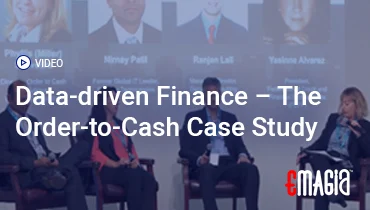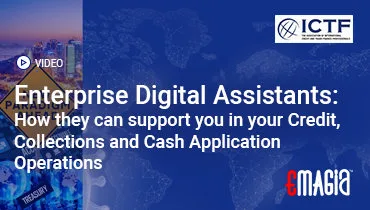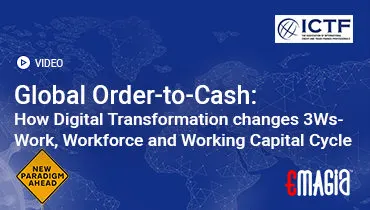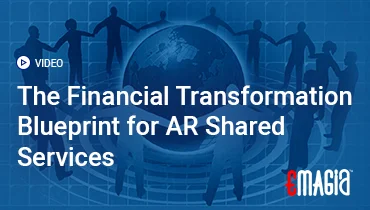In today’s interconnected world, if your business isn’t equipped to accept payments online, you’re missing out on a vast ocean of opportunity. The ability to transact digitally is no longer a luxury but a fundamental necessity for survival and growth. Yet, behind every seemingly simple “click to pay” button lies a sophisticated piece of technology that ensures your customers’ sensitive financial information is handled securely and efficiently. This vital component is known as a payment gateway.
For many entrepreneurs and business leaders, the inner workings of online payments can seem like a mysterious black box. You know you need to accept credit cards and digital wallets, but the infrastructure that makes it happen might remain unclear. Understanding “what is a payment gateway” and how it facilitates secure transactions is paramount for building trust with your customers and scaling your digital operations. It’s the unseen bridge that connects your customer’s payment method to your bank account, ensuring funds move safely from one point to another.
This comprehensive guide will demystify the world of payment gateway services. We will delve into their fundamental role in e-commerce, meticulously explain “how payment gateway works” step-by-step, highlight key features to look for in a robust “payment gateway system,” and provide essential insights into choosing the best online payment gateway for your specific business needs. By the end, you’ll gain a clear understanding of this critical technology, empowering you to confidently manage your digital payment infrastructure and drive your online commerce forward.
Understanding the Core: What is a Payment Gateway?
Let’s begin by defining this crucial component of online transactions and clarifying its fundamental role.
Defining “What is a Payment Gateway?”: The Digital Bridge
At its heart, a payment gateway is a service that authorizes credit card or direct payment processing for online businesses. Think of it as a secure digital bridge that connects your website or e-commerce platform to the payment processor or acquiring bank. When a customer enters their payment details on your website, the payment gateway securely transmits this information to the relevant financial institutions for authorization and then relays the response back to your website. It’s the technological “gatekeeper” ensuring transactions can pass through securely.
Without a reliable payment gateway, an online business cannot accept digital payments, making it an indispensable part of any modern e-commerce setup. It acts as the secure conduit for all forms of digital currency exchange, a critical component of seamless pagamento in the digital realm.
“Payment Gateway Meaning”: Facilitating Secure Transaction Flow
The “payment gateway meaning” extends beyond just a simple connection. It encompasses the entire secure communication process between a merchant’s website, the customer’s bank, and the merchant’s bank. Its primary function is to securely encrypt sensitive card details, tokenizing them to protect against fraud, and then transmit this information through the complex payment network for authorization. Essentially, it’s the invisible yet vital infrastructure that enables a safe and reliable “gateway payment” for all parties involved.
This critical function is why a robust electronic payment gateway is non-negotiable for online operations, distinguishing it from traditional payment methods.
“Electronic Payment Gateway”: The Backbone of Digital Commerce
The term “electronic payment gateway” emphasizes its role in facilitating digital transactions, rather than physical point-of-sale interactions. It’s the backbone for any business seeking to accept payments over the internet, whether through a website, a mobile app, or even via an invoicing system. It enables secure card-not-present transactions, ensuring that funds can be safely exchanged without the physical presence of a credit card or direct debit. This is where the reliability of a payment gatway becomes paramount.
“How Payment Gateway Works”: The Behind-the-Scenes Process
To fully appreciate the significance of payment gateway services, it’s crucial to understand the intricate, multi-step journey a payment takes from a customer’s click to funds in your account. This is the essence of “how payment gateway works.”
Step-by-Step Payment Gateway Process: The Transaction Journey
The payment gateway process involves several rapid-fire steps that occur in mere seconds:
- Customer Initiates Payment: A customer selects products or services on your website and proceeds to checkout. They enter their payment details (e.g., credit card number, expiration date, CVV, billing address) into your website’s payment form, which is typically hosted or integrated with the payment gateway.
- Data Encryption and Transmission to the Gateway: Your website securely collects these sensitive details. The payment gateway then encrypts this information using advanced security protocols (like SSL/TLS) to protect it from interception. This encrypted data is then sent from your website to the payment gateway service provider.
- Gateway Sends Data to Acquiring Bank: The payment gateway receives the encrypted data and forwards it to your acquiring bank (the bank that holds your merchant account and processes your transactions).
- Acquiring Bank to Card Networks: The acquiring bank sends the transaction details to the relevant card network (e.g., Visa, Mastercard, American Express, Discover). This is where the power of a credit card payment gateway truly shines.
- Card Networks to Issuing Bank: The card network then routes the transaction to the customer’s issuing bank (the bank that issued the credit or debit card to your customer).
- Issuing Bank Authorization: The issuing bank verifies the customer’s account balance or credit limit, checks for fraud, and then approves or declines the transaction.
- Response Back Through the Chain: The approval or decline message travels back through the card network, to the acquiring bank, and finally to the payment gateway.
- Gateway Notifies Merchant (and Customer): The payment gateway receives the response and instantly relays it to your website. Your website then displays a confirmation or decline message to the customer. This entire authorization process typically takes only a few seconds, making online purchases feel seamless. This is the heart of any reliable payment gate way.
- Settlement and Funds Transfer: If approved, the funds are not immediately transferred. At the end of the business day (or at predetermined intervals), all approved transactions are “batched” and sent to the acquiring bank for settlement. The acquiring bank then requests the funds from the issuing banks through the card networks. Finally, the funds, minus processing fees, are deposited into your merchant account. This usually takes a few business days.
Understanding this detailed “payment gateway process” illuminates the secure and complex journey of every online transaction, clarifying the “gateway transaction meaning” from initiation to settlement. It’s truly an intricate dance of digital information.
Key Components and Functionalities of a Robust Payment Gateway System
A sophisticated payment gateway system offers much more than just transaction routing. It’s equipped with various features designed to enhance security, efficiency, and customer experience.
1. Encryption and Security: Protecting Sensitive Data
At the forefront of any payment gateway is robust encryption. It’s the primary line of defense against data breaches and fraud. All sensitive payment information, like credit card numbers, is encrypted during transmission (e.g., via SSL/TLS protocols) and often tokenized, meaning the actual card number is replaced with a unique, meaningless identifier. This adherence to strict security standards, particularly PCI DSS (Payment Card Industry Data Security Standard), is non-negotiable for any reputable credit card payment gateway.
2. Fraud Prevention Tools: Mitigating Risk
Modern payment gateways come equipped with advanced fraud detection tools to protect both merchants and customers. These can include:
- Address Verification Service (AVS): Checks if the billing address provided matches the cardholder’s address on file.
- Card Verification Value (CVV/CVC): Verifies the 3 or 4-digit security code on the back of the card.
- Geolocation and IP Analysis: Identifies suspicious transaction locations.
- Velocity Checks: Flags unusually high numbers of transactions from a single card or IP address within a short period.
- 3D Secure (e.g., Verified by Visa, Mastercard Identity Check): Adds an extra layer of security requiring customers to authenticate a transaction with their bank.
These features enhance the security of every gateway credit card payment.
3. Integration Options: Seamless Connectivity
A versatile payment gateway system offers various integration methods to seamlessly connect with different e-commerce platforms and websites:
- APIs (Application Programming Interfaces): Provide developers with tools to deeply embed the payment gateway functionality directly into a website or application, offering maximum customization and control over the checkout experience. This is crucial for custom-built online payment gateway solutions.
- Hosted Payment Pages: Redirect customers to a secure, external page hosted by the payment gateway provider to complete their payment. This offloads PCI compliance burden from the merchant.
- SDKs (Software Development Kits): Pre-built code libraries that simplify integration for specific platforms or mobile apps.
- Shopping Cart Plugins: Ready-made integrations for popular e-commerce platforms like Shopify, WooCommerce, Magento, etc.
4. Support for Multiple Payment Methods: Expanding Reach
A comprehensive payment gateway should support a wide array of payment methods to cater to diverse customer preferences globally, including:
- Major credit and debit cards (payment gateway for credit card processing).
- Digital wallets (e.g., Apple Pay, Google Pay, PayPal).
- Bank transfers (e.g., ACH in the US, SEPA in Europe).
- Alternative payment methods common in specific regions (e.g., iDEAL, Sofort).
- “Pagamento” options covering various local preferences.
The broader the support, the more sales you can potentially convert.
5. Reporting and Analytics: Gaining Insights
Robust reporting tools within a payment gateway system provide merchants with valuable insights into their transaction data. This includes transaction history, successful vs. failed transactions, chargeback rates, settlement reports, and customer payment trends. These analytics are crucial for financial reconciliation and strategic business decisions. This feature turns raw transaction data into actionable intelligence for your online payment gateway.
6. Recurring Billing Capabilities: The “Billing Gateway”
For subscription-based businesses or those offering installment plans, the ability to handle recurring payments automatically is essential. Many payment gateways offer a “billing gateway” functionality that securely stores customer payment information (often tokenized) and processes scheduled payments without requiring the customer to re-enter details for each transaction. This is a vital feature for membership sites and SaaS companies.
Types of Payment Gateway Solutions: Choosing the Right Fit for Your Business
Not all payment gateways are created equal. Different types of payment gateway solutions offer varying levels of control, integration complexity, and PCI compliance responsibilities. Selecting the right one is crucial for your specific business model.
1. Hosted Payment Gateways (Redirect)
With a hosted payment gateway, when a customer clicks “Pay” on your website, they are redirected to a secure payment page hosted by the payment gateway provider (e.g., PayPal Standard Checkout, Stripe Checkout). After payment, they are redirected back to your confirmation page.
- Pros: Easiest to set up, minimal PCI compliance burden for the merchant (as sensitive data is never handled by your server), often suitable for small businesses and startups. This is a common “payment gateway example” for simplicity.
- Cons: Less control over the user experience (customers leave your site), potential for lower conversion rates due to redirection.
2. Integrated (Self-Hosted) Payment Gateways (API)
An integrated payment gateway (often using APIs or SDKs) allows customers to enter their payment details directly on your website, without redirection. The sensitive data is still encrypted and transmitted securely to the payment gateway in the background.
- Pros: Full control over the user experience (customers remain on your site), highly customizable checkout flow, professional appearance. This is the preferred method for many large payment gateway in ecommerce businesses.
- Cons: Higher PCI compliance burden for the merchant (though sensitive data never touches your server if properly implemented), requires more technical development work.
3. Direct Post / Non-Hosted Payment Gateway Internet Options
Similar to integrated, but with direct post, the customer’s browser posts the payment information directly to the payment gateway without it passing through your server first. It gives the merchant more control over the front-end design while minimizing PCI scope on their server.
- Pros: Provides maximum control over the checkout experience while slightly reducing PCI compliance scope compared to a fully integrated API method.
- Cons: Still requires significant technical expertise to implement correctly.
4. Mobile Payment Gateways
These are payment gateways specifically optimized for mobile applications, often utilizing SDKs. They ensure a smooth and secure checkout experience on smartphones and tablets, integrating with mobile wallets and biometric authentication features. This is crucial for modern businesses looking for a robust “e payment gateway” for their mobile apps.
Why Payment Gateway Services Are Essential for Online Businesses
Beyond simply facilitating transactions, robust payment gateway services are fundamental pillars for the success and sustainability of any online commercial venture.
1. Enabling Payment Gateway in Ecommerce: The Core Function
The most obvious reason for payment gateway services is that they are the very mechanism that enables any payment gateway in ecommerce business to function. Without them, you simply cannot accept online payments from credit cards, debit cards, or digital wallets. They are the essential infrastructure that converts browsing into buying, turning potential customers into actual sales. They are the definition of an online payment gateway.
2. Security and Trust: Building Customer Confidence
In the digital realm, trust is paramount. Customers are increasingly aware of cybersecurity risks and are hesitant to share sensitive financial information with unverified platforms. A reliable payment gateway provides the necessary encryption, fraud detection tools, and PCI DSS compliance to protect customer data, thereby building trust and confidence. Knowing their credit card payment gateway is secure encourages customers to complete their purchases.
3. Global Reach and Multiple Payment Methods
A good payment gateway opens your business to a global customer base by supporting multiple currencies and a wide array of local and international payment methods. Whether a customer prefers Visa, Mastercard, PayPal, or a regional payment system (like “pagamento” options in various countries), a versatile payments gateway can accommodate them, vastly expanding your market reach and conversion rates.
4. Efficiency and Automation: Streamlining Operations
Automating the payment processing allows businesses to significantly reduce manual reconciliation efforts. Funds are securely transferred, and transaction data is provided in a structured format, which can be integrated directly into accounting and ERP systems. This efficiency frees up valuable staff time, allowing them to focus on higher-value tasks, rather than manual data entry and reconciliation of every “pay gateway” transaction.
5. Risk Management: Minimizing Fraud and Chargebacks
The built-in fraud prevention tools (AVS, CVV, 3D Secure, velocity checks) offered by payment gateways are critical for minimizing fraudulent transactions and subsequent chargebacks. A high chargeback rate can be devastating for a business, leading to lost revenue, increased fees, and even account termination. The proactive risk management features of a robust gateway payment system protect your bottom line.
Choosing the Best Payment Gateway Service for Your Business
With numerous payment gateway services available, selecting the right one requires careful consideration of your business’s specific needs and priorities.
1. Cost Structure: Understanding All Fees
Fees are a major factor. Look beyond just the advertised transaction percentage. Consider:
- Per-transaction fees: A percentage + a fixed fee (e.g., 2.9% + $0.30).
- Monthly fees: Flat fees for account maintenance.
- Setup fees: One-time charges to get started.
- Chargeback fees: Penalties for customer disputes.
- PCI compliance fees: Annual or monthly fees for maintaining security standards.
- Currency conversion fees: For international transactions.
A clear understanding of the full cost for your typical transaction volume is essential for any “payment getway” decision.
2. Security Features and PCI Compliance
Ensure the payment gateway service is PCI DSS compliant and offers robust fraud prevention tools like AVS, CVV, and 3D Secure. Your customers’ financial security should be paramount, making the security of the “gateway credit card payment” mechanism a top priority.
3. Supported Payment Methods and Currencies
Does the online payment gateway support all the credit cards, digital wallets, and local payment methods your target customers use? If you operate internationally, ensure it supports the necessary currencies and local pagamento options.
4. Ease of Integration and Developer Support
How easily can the payment gateway integrate with your existing website or e-commerce platform? Look for clear documentation, comprehensive APIs, and good developer support if you plan a custom integration. A user-friendly payment gateway for online platforms is crucial.
5. Reliability and Uptime
A payment gateway that frequently experiences downtime can lead to lost sales and frustrated customers. Research their uptime history and reliability. A consistent “paymen gateway” is vital for uninterrupted business operations.
6. Customer Support
When issues arise, prompt and effective customer support is invaluable. Check reviews and inquire about their support channels (phone, email, chat) and response times. Good support for your electronic payment gateway can save you significant headaches.
7. Scalability
Can the payment gateway system grow with your business? As your transaction volume increases, will it be able to handle the load without performance issues or disproportionately rising costs? Choose a payment gateway for credit card processing that can evolve with your needs.
Emagia: Orchestrating the Full Order-to-Cash Cycle Beyond the Gateway
While payment gateway services are undeniably critical for initiating secure online transactions, they represent only the first step in a business’s journey to convert sales into realized revenue. The true efficiency and profitability of your financial operations depend on what happens *after* the “gateway payment” is authorized. This is precisely where Emagia’s AI-powered Order-to-Cash (O2C) platform delivers transformative value, orchestrating the entire process to ensure that authorized payments quickly become available cash.
Emagia doesn’t directly provide payment gateway services, but it seamlessly integrates with all leading payment gateways and processors, capturing rich transaction data and leveraging it to automate and optimize the subsequent, often complex, Accounts Receivable (AR) processes. Once the payment gateway has done its job of securing and authorizing the transaction, Emagia’s intelligent automation takes over to:
- Accelerate Cash Application: Our AI-driven engine automatically matches incoming payments to invoices from the data received via the payment gateway internet feed, minimizing manual effort and significantly reducing unapplied cash. This speeds up your cash conversion cycle dramatically.
- Streamline Reconciliation: By intelligently processing transaction details from your payment gateway and bank statements, Emagia automates the reconciliation process, quickly identifying discrepancies and ensuring accurate financial records.
- Enhance Collections: For any outstanding invoices not fully covered by initial payments, Emagia’s predictive analytics prioritize collection efforts, focusing on high-risk accounts and optimizing dunning strategies.
- Provide Holistic Insights: Beyond just a single “gateway transaction meaning,” Emagia provides comprehensive visibility into your entire AR landscape, offering insights into payment trends, customer behavior, and overall cash flow health derived from integrated data, including that from your payment gatway.
By empowering your post-gateway operations with AI and automation, Emagia ensures that the efficiency gained at the point of sale is carried through to cash realization. This optimization not only frees up your finance team’s valuable time but also dramatically improves your Days Sales Outstanding (DSO), leading to healthier working capital and a stronger financial position. With Emagia, your business moves beyond merely accepting payments to truly mastering its cash flow, maximizing profitability from every single “pay gateway” transaction in your e-commerce ecosystem.
Frequently Asked Questions (FAQs) About Payment Gateway Services
What is a payment gateway, and what is its primary function?
A payment gateway is a service that securely authorizes credit card and direct payment processing for online businesses. Its primary function is to securely transmit sensitive payment information from your website to the payment processor or acquiring bank for authorization, and then relay the response back. It acts as the secure digital bridge that enables online transactions, essential for any online payment gateway.
How payment gateway works to ensure transaction security?
A payment gateway ensures transaction security through several layers: It encrypts sensitive customer data (e.g., credit card numbers) using strong protocols like SSL/TLS before transmission. It often tokenizes card details, replacing them with unique identifiers. Additionally, reputable payment gateway services are PCI DSS compliant and offer built-in fraud prevention tools such as AVS (Address Verification Service), CVV checks, and 3D Secure authentication. This entire payment gateway process safeguards customer information.
What’s the difference between a payment gateway and a payment processor?
While often used together, a payment gateway and a payment processor have distinct roles. The payment gateway (like the “credit card gateway”) securely transmits transaction data between your website and the payment network. The payment processor, on the other hand, is the financial institution that actually processes the transaction by communicating with card networks and banks, handling the movement of funds from the customer’s bank to your merchant account. They work hand-in-hand to complete a digital payment.
Can a single payment gateway support all types of online payments?
A single payment gateway can support a wide variety of online payment gateway methods, including major credit/debit cards, digital wallets (e.g., Apple Pay, Google Pay, PayPal), and often local bank transfers or alternative payment methods specific to certain regions (referred to as “pagamento” options). The extent of supported payment types depends on the specific payment gateway service provider you choose. Many strive for comprehensive coverage to maximize a merchant’s global reach.
Are there recurring fees associated with payment gateway services?
Yes, payment gateway services typically come with recurring fees in addition to per-transaction charges. These can include: monthly maintenance fees for the payment gateway system itself, annual PCI compliance fees, and sometimes fees for specific features like recurring billing (acting as a “billing gateway”) or advanced fraud tools. It’s crucial to understand the full fee structure of any “payment getway” to avoid surprises.
Why is a payment gateway crucial for an ecommerce business’s success?
A payment gateway is crucial for an ecommerce business’s success because it is the fundamental technology that enables online transactions. Without it, a business cannot securely accept digital payments, limiting its reach. Beyond basic functionality, a reliable payment gateway in ecommerce builds customer trust through robust security, offers global reach by supporting multiple currencies and payment methods, and provides automation and analytics that streamline operations and aid risk management, all vital for growth.
What does “gateway transaction meaning” refer to in the payment process?
“Gateway transaction meaning” refers to the specific stages of a payment interaction handled by the payment gateway. This includes the secure encryption and initial transmission of payment data from the merchant’s website, the routing of that data to the acquiring bank and card networks for authorization, and the relaying of the authorization (approval or decline) response back to the merchant. It’s the critical communication link that ensures the payment data reaches its destination and the merchant receives a timely response, making the transaction flow possible.
Conclusion: Powering Your Digital Future with Strategic Payment Gateway Services
In the vibrant, fast-paced landscape of online commerce, payment gateway services are not just a technological convenience; they are the essential engine driving secure and efficient digital transactions. As we’ve thoroughly explored, understanding “what is a payment gateway” goes far beyond a simple definition; it’s about appreciating the intricate ballet of data encryption, authorization, and settlement that occurs with every single online purchase.
From the detailed payment gateway process that ensures security and speed, to the myriad functionalities of a robust “payment gateway system” – including fraud prevention, versatile integration options, and recurring billing capabilities – every aspect plays a critical role. Choosing the right online payment gateway involves a careful consideration of costs, security features, supported payment methods, and scalability, tailored to your unique business needs and growth aspirations.
Ultimately, a strategically chosen and well-implemented payment gateway for online transactions empowers your business to expand its reach globally, build unwavering customer trust, streamline operations through automation, and effectively manage financial risks. It transforms the act of accepting digital payments from a mere necessity into a powerful competitive advantage, ensuring your business is not just participating in the digital economy, but thriving within it.



